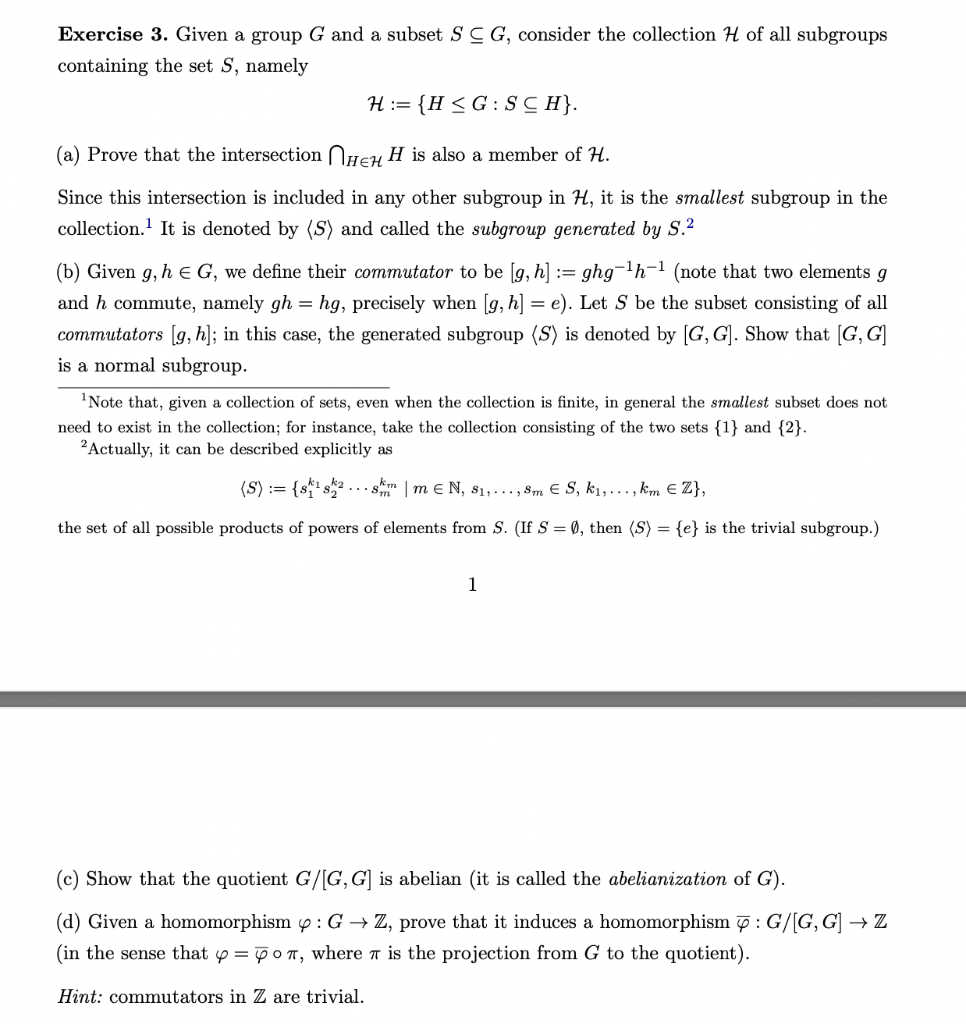Answered step by step
Verified Expert Solution
Question
1 Approved Answer
Exercise 3. Given a group G and a subset SCG, consider the collection H of all subgroups containing the set S, namely H:= {H

Exercise 3. Given a group G and a subset SCG, consider the collection H of all subgroups containing the set S, namely H:= {H G: SCH}. (a) Prove that the intersection HEH H is also a member of H. Since this intersection is included in any other subgroup in H, it is the smallest subgroup in the collection. It is denoted by (S) and called the subgroup generated by S.2 (b) Given g, h = G, we define their commutator to be [g, h] := ghg-h- (note that two elements g and h commute, namely gh = hg, precisely when [g, h] = e). Let S be the subset consisting of all commutators [g, h]; in this case, the generated subgroup (S) is denoted by [G, G]. Show that [G, G] is a normal subgroup. Note that, given a collection of sets, even when the collection is finite, in general the smallest subset does not need to exist in the collection; for instance, take the collection consisting of the two sets {1} and {2}. 2Actually, it can be described explicitly as (S) := {s s...sm | m N, $,..., Sm S, k,..., km Z}, the set of all possible products of powers of elements from S. (If S = 0, then (S) = {e} is the trivial subgroup.) 1 (c) Show that the quotient G/[G, G] is abelian (it is called the abelianization of G). (d) Given a homomorphism : G Z, prove that it induces a homomorphism : G/[G, G] Z (in the sense that y=pon, where is the projection from G to the quotient). Hint: commutators in Z are trivial.
Step by Step Solution
★★★★★
3.49 Rating (166 Votes )
There are 3 Steps involved in it
Step: 1
3 Given SCH for all Hef S en H Now As e...
Get Instant Access to Expert-Tailored Solutions
See step-by-step solutions with expert insights and AI powered tools for academic success
Step: 2

Step: 3

Ace Your Homework with AI
Get the answers you need in no time with our AI-driven, step-by-step assistance
Get Started


